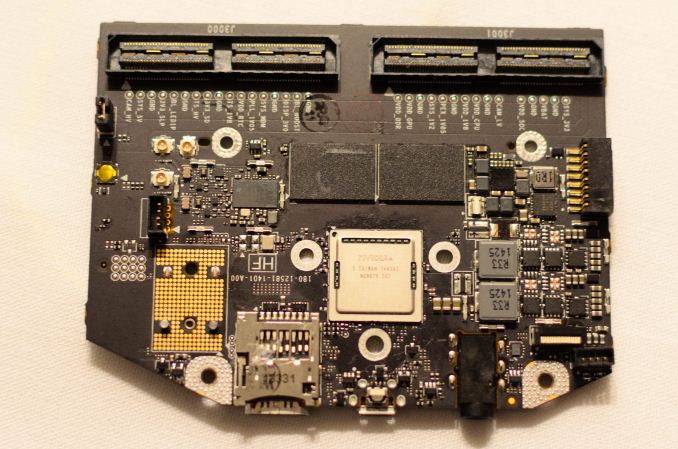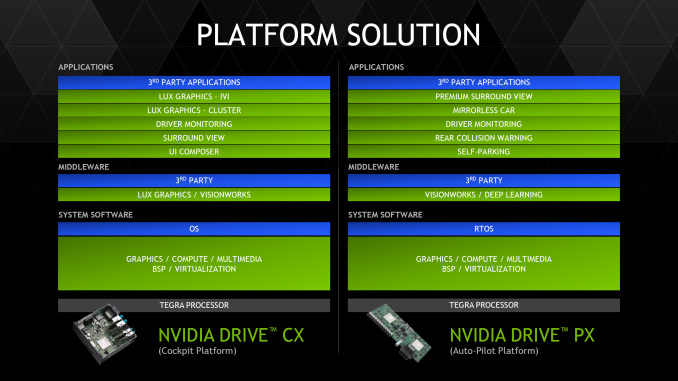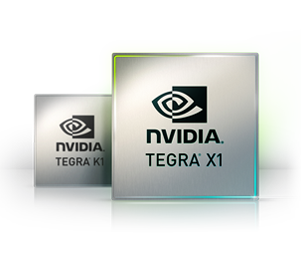NVIDIA Tegra X1 Preview & Architecture Analysis
by Joshua Ho & Ryan Smith on January 5, 2015 1:00 AM EST- Posted in
- SoCs
- Arm
- Project Denver
- Mobile
- 20nm
- GPUs
- Tablets
- NVIDIA
- Cortex A57
- Tegra X1
Final Words
With the Tegra X1, there have been a great deal of changes when compared to Tegra K1. We see a move from Cortex A15 to A57 on the main cluster, and a move from a single low power Cortex A15 to four Cortex A53s which is a significant departure from previous Tegra SoCs. However, the CPU design remains distinct from what we see in SoCs like the Exynos 5433, as NVIDIA uses a custom CPU interconnect and cluster migration instead of ARM’s CCI-400 and global task scheduling. Outside of these CPU changes, NVIDIA has done a great deal of work on the uncore, with a much faster ISP and support for new codecs at high resolution and frame rate, along with an improved memory interface and improved display output.
Outside of CPU, the GPU is a massive improvement with the move to Maxwell. The addition of double-speed FP16 support for the Tegra X1 helps to improve performance and power efficiency in applications that will utilize FP16, and in general the mobile-first focus on the architecture makes for a 2x improvement in performance per watt. While Tegra K1 set a new bar for mobile graphics for other SoC designers to target, Tegra X1 manages to raise the bar again in a big way. Given the standards support of Tegra X1, it wouldn’t be a far leap to see more extensive porting of games to a version of SHIELD Tablet with Tegra X1.
NVIDIA has also made automotive applications a huge focus in Tegra X1 in the form of DRIVE CX, a cockpit computing platform, and DRIVE PX, an autopilot platform. Given the level of integration and compute present in both DRIVE CX and PX, there seems to be a significant amount of value in NVIDIA’s solutions. However, it remains to be seen whether OEMs will widely adopt these solutions as car manufacturers can take multiple years to implement a new SoC. Compared to the 3-4 month adoption rate of an SoC in a phone or tablet, it's hard to pass any judgment on whether or not NVIDIA's automotive endeavors will be a success.
Overall, Tegra X1 represents a solid improvement over Tegra K1, and now that NVIDIA has shifted their GPU architectures to be targeted at mobile first, we’re seeing the benefits that come with such a strategy. It seems obvious that this would be a great SoC to put in a gaming tablet and a variety of other mobile devices, but it remains to be seen whether NVIDIA can get the design wins necessary to make this happen. Given that all of the high-end SoCs in the Android space will be shipping with A57 and A53 CPUs, the high-end SoC space will see significant competition once again.













194 Comments
View All Comments
Maleficum - Tuesday, January 6, 2015 - link
In fact, Denver IS very special: it's NOT a custom ARM design, but an emulator, a reincarnation of Transmeta's Crusoe/Efficeon.The sad thing is however, that it has TONS of inherent issues, just like the Crusoe/Efficeon.
This time, nVidia did a wise choice by ditching this very questionable design and turned to the traditional native design.
Yojimbo - Tuesday, January 6, 2015 - link
They haven't ditched it. Per at least one top NVIDIA executive, Denver is expected to appear again in future products. Supposedly the reason why Denver is not appearing in the X1 is because it is not ready for the 20nm process shrink, and they want to bring the X1 out faster than Denver would allow. He said Denver is expected to be in 16nm products.chitownbarber - Tuesday, January 6, 2015 - link
Nvidia hired most of the Transmeta engineers, and have implemented at least one similar innovative feature from Transmeta into Denver called Dynamic Code Optimization which optimizes frequently used software routines.Jumangi - Monday, January 5, 2015 - link
Why are you saying "breaking into" an established market? Nvidia was in that market back with the Tegra 2 but their BS claims fell flat when put into real products and device makers abandoned them. They lost their market and now have to win it back again.chizow - Monday, January 5, 2015 - link
Really? What major design wins did the Tegra 2 have at the time? They have always been playing catch up with the likes of Qualcomm, Samsung, even TI back in that time period.At no time has Tegra ever been the market leader in mobile devices, so yeah, so much for that incorrect assertion, clearly they are trying to break into this market and looking at different ways of doing it.
Jumangi - Monday, January 5, 2015 - link
You must have a short memory. Tegra 2 was used in a number of phones because it was the first commercial quad core SoC and companies bought into Nvidia's claims. Then reality came and OEM's abandoned them and they have been trying to turn it around for years now.chizow - Tuesday, January 6, 2015 - link
Which phones? And still nothing even remotely close to the market share captured and retained by the likes of Qualcomm, even TI in that era.As for short memory, again, I believe you are mistaken, Tegra 2 was the first mobile "dual core", perhaps you were thinking of Tegra 3, which is probably still Nvidia's biggest commercial Tegra success but still nothing even remotely close to capturing the market lead as it was going up against the likes of Qualcomm's Snapdragon 400 series.
http://www.nvidia.com/object/tegra-superchip.html
chizow - Monday, January 5, 2015 - link
Also, perhaps the biggest boon of Nvidia's investment in mobile has been their amazing turnaround in terms of power efficiency, which is undoubtedly a result of their investment in mobile GPU designs and the emphasis on lowering TDP.techconc - Monday, January 5, 2015 - link
I would suggest that something like Pixelmator would be a good example of an app that leverages the power of the A8X. Though, I would agree that the A8X is overkill for most apps.DanD85 - Monday, January 5, 2015 - link
Seems to be that the Denver core will take the back seat this year. Judging from the performance of the nexus 9,Denver didn't really set the world on fire as Nvidia previously made it out to be. I think the K1 was relatively a let down last year with limited design win and spotty performance of the Denver architecture. I wonder when will Denver make a come back? 2016?